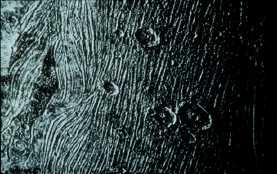This image shows the grooved terrain of Ganymede.
Click on image for full size
NASA
The Grooved Terrain of Ganymede
This image shows an example of the grooved terrain of Ganymede.
The image clearly shows that some things hit Ganymede and made craters after the grooves were created, because the grooves are underneath the craters.
A closeup view of these grooves, provided by the Galileo spacecraft, reveals that the ridges are actually many ridges which have mysteriously been pulled apart.
You might also be interested in:
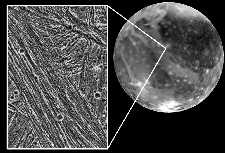
Instead of icy-volcanism, the surface of Ganymede reveals a gradual surface stretching which is similar to the crustal stretching of the Earth. In this case, the folding and stretching of the crust of
...more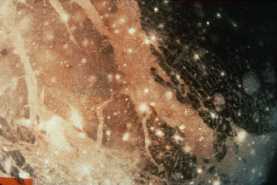
This image shows an example of the light terrain of Ganymede. The image shows the contrast between the light terrain and the dark terrain of Ganymede. The light terrain is where the grooves of Ganymede
...more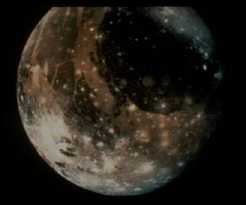
The surface of Ganymede is halfway between Callisto and Europa. There are portions of the surface of Ganymede that have many craters, like Callisto and there are portions which are relatively new, and
...more
Amalthea was discovered by E Barnard in 1872. Of the 17 moons it is the 3rd closest to Jupiter. Amalthea is about the size of a county or small state. Amalthea is named after the goat in Greek mythology
...more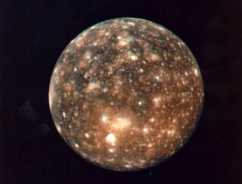
Callisto was first discovered by Galileo in 1610. It is the 2nd largest moon in the solar system, and is larger than the Earth's moon. It is about as big as the distance across the United States. Callisto
...more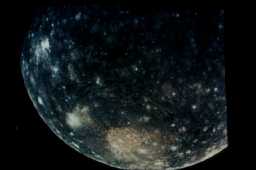
Measurements by the Galileo spacecraft have been shown that Callisto is the same inside from the center to the surface. This means that Callisto does not have a core at the center. This means that, unlike
...more
Many different types of surface are shown in this picture. In the front is a huge crater, which goes for a long way over the surface. This crater could be compared to that of Mimas. They both show that
...more


